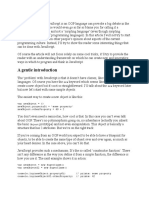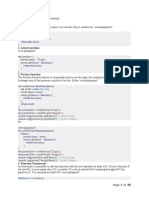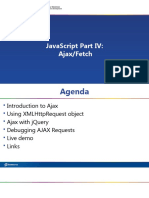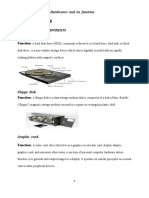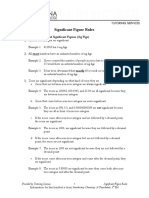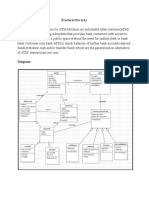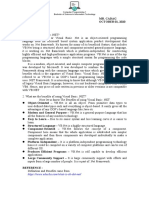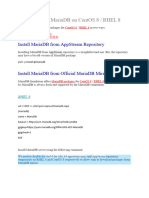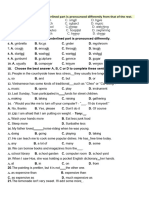0% found this document useful (0 votes)
75 views24 pagesModule 4 OOP - First Touch
The document provides an overview of object-oriented programming concepts in JavaScript, including:
1. Custom objects can be created using JSON syntax or constructors. Constructors are functions used to define and initialize objects with shared attributes and methods.
2. The "this" keyword refers to the context or object instance a method is called on. It allows methods like "run()" to access the correct "name" attribute of the object.
3. The "new" operator creates a new object instance, sets that object as the context ("this"), runs the constructor to initialize it, and returns the initialized object. It allows objects to be reproduced from a common definition.
Uploaded by
Юля ЦурканCopyright
© © All Rights Reserved
We take content rights seriously. If you suspect this is your content, claim it here.
Available Formats
Download as PPT, PDF, TXT or read online on Scribd
0% found this document useful (0 votes)
75 views24 pagesModule 4 OOP - First Touch
The document provides an overview of object-oriented programming concepts in JavaScript, including:
1. Custom objects can be created using JSON syntax or constructors. Constructors are functions used to define and initialize objects with shared attributes and methods.
2. The "this" keyword refers to the context or object instance a method is called on. It allows methods like "run()" to access the correct "name" attribute of the object.
3. The "new" operator creates a new object instance, sets that object as the context ("this"), runs the constructor to initialize it, and returns the initialized object. It allows objects to be reproduced from a common definition.
Uploaded by
Юля ЦурканCopyright
© © All Rights Reserved
We take content rights seriously. If you suspect this is your content, claim it here.
Available Formats
Download as PPT, PDF, TXT or read online on Scribd
/ 24




